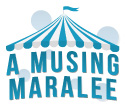Remember that moment when you were sitting in class and the fire alarm went off? You’d have a brief second of panic, then remember to get up and follow your class out to your designated spot. You never knew if it was a drill or the real thing, but you knew what to do because it was something you’d been practicing since Kindergarten.
That’s how we want our kids to respond if they ever feel like they’re in an uncomfortable situation. We work to prevent and deal with sexual abuse by doing “fire drill” conversations to help them practice how they should respond to those kinds of difficult situations. The hope is that if they should ever encounter one of those situations in real life, they know exactly what to do.
My parents did an excellent job of handling this for me and my siblings. We had a book in our home (I remember having it in a bookcase in my room, so it was not something reserved for special occasions) that addressed different scenarios where a child might find themselves in a shady situation and what they should do. I remember pulling it from the shelf to read along with my favorite “Frog and Toad” books and the classic “Bedtime for Frances.” My mom was entirely unfazed by me adding a book about potential exposure to sexual abuse to our regular bedtime stories. She’d read it, we’d talk through it, and we moved on to the next thing.
I mean, it’s quite possible she was SUPER FAZED by it, but she never let us know. Which is exactly how we want to be responding to this topic with our kids. We want to be calm and act like this is something we could help our kids work through and want to teach them how to handle. I remember my mom talking through different scenarios to ask us what we would do and walking us through appropriate responses.
I recently checked and there is an updated version of the book my parents read to me 30 years ago. I still read the original one to my kids, but I bet the updated version is even more helpful:
The worry is that we’ll scar our kids or they’ll become terrified to interact with the outside world if we talk to them about sexual abuse. It turns out, the opposite is true. When we practice what our kids should do, we’re empowering them. We’re telling them, “When you hear the fire alarm, just walk calmly to your designated spot.” We practice it over and over until they know exactly what they should do. Just having a plan helps them and we hope they never have to use it. Sometimes when we’re driving across town I’ll ask, “If someone wanted to see your private parts, what would you say?” and let my kids answer. Sometimes it’s while we’re having popsicles on the porch I’ll ask, “If a friend tried to touch you in a private area, how would you handle that?”
I was really proud of my daughter this year when she had to report an incident that made her uncomfortable. She knew exactly what to do and I was really thankful that the adults involved responded appropriately on both sides– encouraging my daughter that she did the right thing to tell, talking seriously with the boy involved, not overreacting to what was essentially a childish misbehavior, having the boy apologize. I could tell my daughter felt empowered by the whole process. She knew what her boundaries were, she knew they had been crossed, she knew to tell and trusted that the adults that love her would believe her. Instead of feeling fearful and belittled by this situation, she felt brave.
I can only imagine how confusing this same incident would have been to a child who didn’t know what to do in this kind of scenario. How guilty they might feel, although it would be entirely inappropriate guilt. How helpless they might feel. How confused. That’s not what we want for our kids.
The statistics are staggering. Too many kids are being wounded by sexual abuse, particularly from people they should be able to trust. We need to arm our kids. We need to stop being afraid of having this conversation and start giving our kids tools to know how to handle what we know statistically could happen.
So here’s how to do your own Sexual Abuse Fire Drill. Ask questions. Let your kids answer and talk through appropriate responses. Here are some of the questions we use at our house:
-Who is allowed to see your private parts?
-If you’re staying at Grandma’s house and she’s helping you take a bath, is it okay for her to see your private parts? If you don’t feel comfortable with that, what can you say?
-If we’re at the doctor, is it okay for them to see your private parts?
-What if you’re out playing and a stranger comes up to you and says they’re a doctor so it’s okay for them to see your private parts, what should you do?
-What should you do if a neighbor kid wants to show you inappropriate pictures on their phone?
-What would you do if a friend sent you an inappropriate picture of themselves? (None of my kids have phones yet, but I want this conversation to be a common one BEFORE we get to that point.)
-What if one of mom or dad’s friends asks for a hug and you don’t feel comfortable giving them one?
-What would you do if you were at a friend’s house and their parent wanted to show you inappropriate pictures on their computer?
This is not an exhaustive list by any stretch, but it’s a starting point. It’s unlikely I would ask all of these questions at one time, but these are the types of questions we would bring up over time. I would hit certain topics at certain times– before school starts, before summer camp, before doctor appointments, before sleepovers, before family gatherings– these are all times we’d talk through elements specific to that situation. The key is to do this BEFORE there could be uncomfortable moments so our kids know what to do. This is what makes this a fire drill and not a panic response. Although these questions may allow our kids the safe space they need to let us know about something that has already happened. That’s a scary reality, but we’d rather know what we’re dealing with than be oblivious.
Keep working through these things until their response becomes automatic, like that classroom fire drill. We can’t prevent the possibility of sexual abuse, but we can empower them to know what to do if they are put in that situation.


4 Comments
Leave a reply →